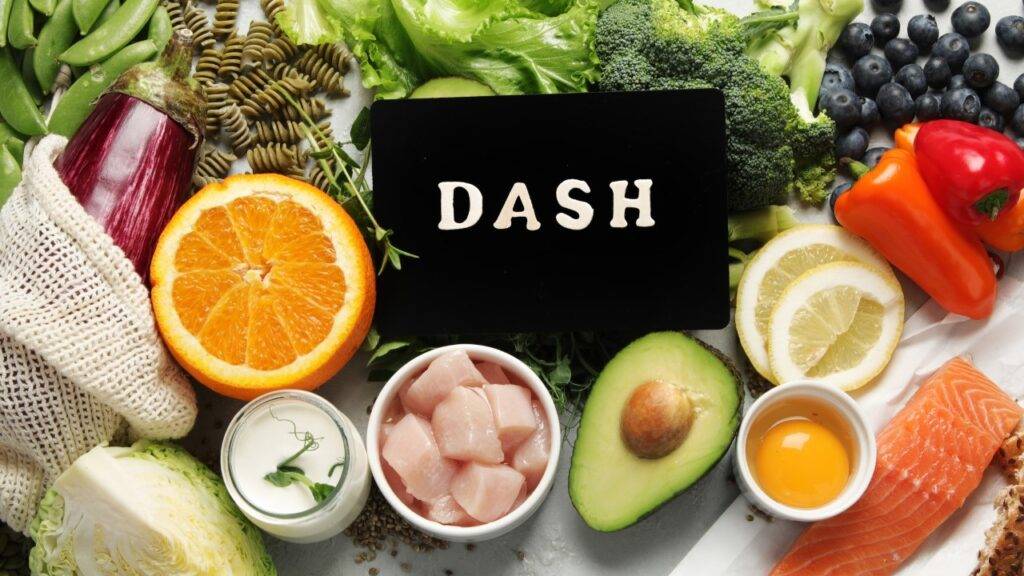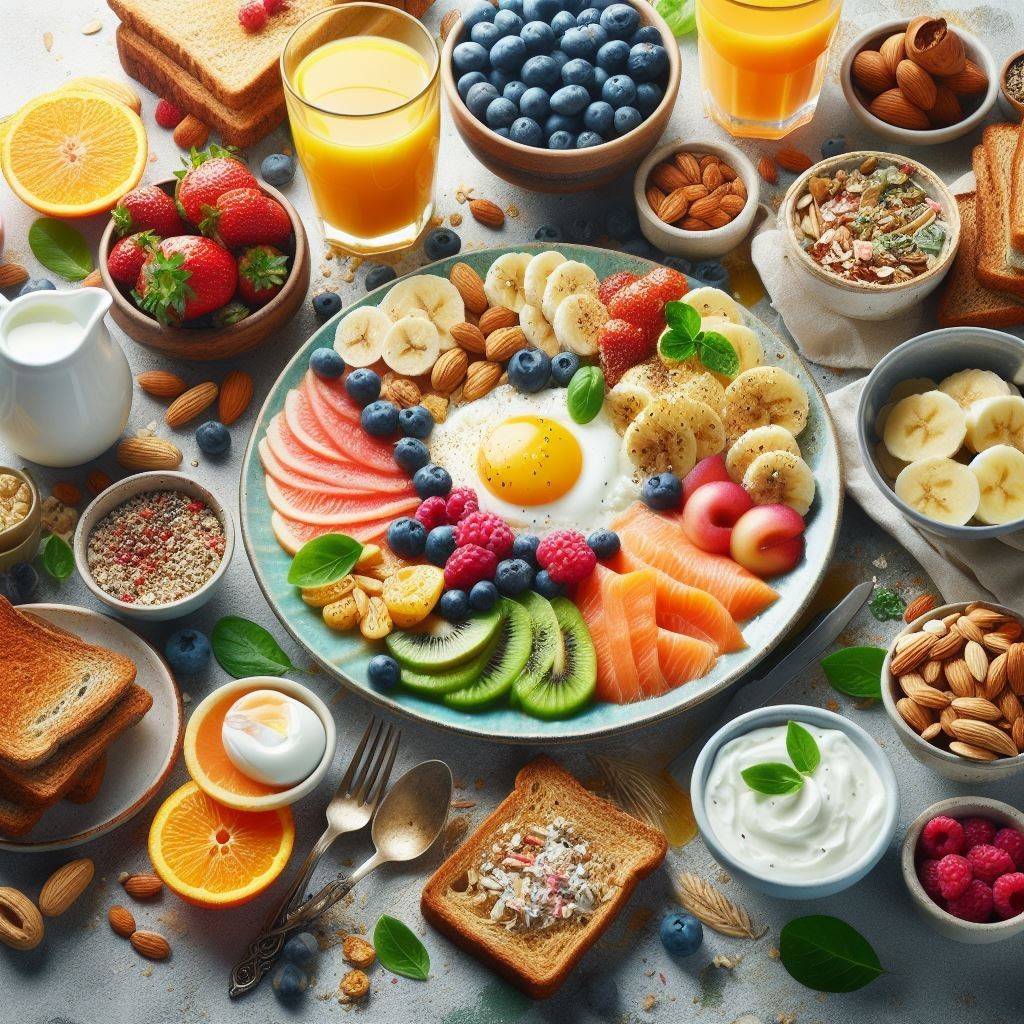Dive into the Dash Diet: Your Key to Lowering Blood Pressure Today!
Discover the power of the Dash Diet to lower blood pressure. Explore tips and insights for a healthier lifestyle. Unlock the secret now!
High blood pressure affects nearly half of American adults, putting them at increased risk for heart disease, stroke, and other serious health issues. While medications can help manage hypertension, making dietary changes is often the first line of defence Enter the scene: the Dash diet – a well-established, equilibrium-based dietary regimen scientifically proven to notably reduce blood pressure within a mere fortnight.
Exploring the Dash Diet: Unveiling Its Essence
The acronym Dash represents Dietary Approaches to Halt Hypertension. Crafted by researchers backed by the National Institutes of Health (NIH), the Dash diet was conceived to unearth a dietary regimen capable of addressing or thwarting high blood pressure sans pharmaceutical intervention.
After extensive research, the Dash diet emerged as an effective, easy-to-follow plan that promotes healthy eating habits and lowers blood pressure. It’s consistently ranked as one of the best overall diets by experts due to its nutritional completeness and ability to protect against diseases like heart disease, stroke, diabetes, and certain cancers.
How the Dash Diet Works
It focuses on increasing your intake of foods rich in nutrients that are associated with lowering blood pressure, such as potassium, calcium, protein, and fiber. At the same time, It limits the consumption of items rich in sodium, saturated fats, and additional sugars, all of which have the potential to elevate blood pressure levels.
Rather than a strict diet with strict rules and guidelines, The Dash diet offers a versatile and well-rounded dietary approach that you can maintain over the long haul. There’s no need to buy special foods or count calories. The emphasis is on making smart food choices from various food groups.
Here’s a quick overview of the key principles of the Dash diet:
Eat More:
- Fruits and vegetables
- Whole grains
- Low-fat dairy
- Lean proteins (chicken, fish, legumes)
- Nuts, seeds, legumes.
- Healthy fats (olive oil, avocados)
Limit:
- Sodium (aim for 2,300 mg per day max)
- Sugary beverages and sweets
- Red and processed meats
- Tropical oils (coconut, palm)
- Full-fat dairy
Unlike low-carb or low-fat diets, the Dash diet doesn’t cut out any major food groups. Rather, it promotes eating a variety of wholesome foods in the right portions to provide all the nutrients you need without going overboard on any single food group.
By decreasing sodium consumption while increasing levels of potassium, calcium, magnesium, dietary fiber, and protein, the Dash diet helps bring blood pressure down through several mechanisms. It’s suitable for people of all ages and health statuses, including those with diabetes, metabolic syndrome, and kidney disease.
What Mechanism Helps the DASH Diet Decrease Blood Pressure?
It lowers blood pressure through several mechanisms:
- Increased Potassium Intake: The diet is rich in potassium from fruits, vegetables, dairy, and nuts. Potassium helps balance sodium levels and relaxes blood vessel walls, improving blood flow.
- Reduced Sodium: By limiting sodium to 2,300mg or less per day, the Dash Diet prevents sodium from causing fluid retention and stiffening of arteries – two factors that raise blood pressure.
- More Calcium & Magnesium: Dairy, leafy greens, nuts, and whole grains provide calcium and magnesium which regulate muscle contractions in the heart and blood vessels for better blood pressure control.
- High in Fiber: The emphasis on fruits, veggies, and whole grains means the Dash Diet is packed with fiber, which can improve cholesterol levels and enhance heart health.
- Anti-Inflammatory Effects: The antioxidants in plant foods and healthy fats like olive oil reduce inflammation, a key driver of hypertension.
So, by increasing nutrients that relax vessels while limiting sodium and inflammation, the Dash Diet effectively lowers elevated blood pressure levels.
Health Benefits of the Dash Diet
Numerous studies have demonstrated the Dash diet’s impressive effects on blood pressure and overall health:
- Lowers systolic blood pressure by 6-11 mm Hg in just 2 weeks.
- Reduces risk of heart disease by 15%
- Lowers LDL “bad” cholesterol levels.
- May reduce the risk of stroke, kidney stones, diabetes, and some cancers.
- Supports healthy weight loss (when calorie-controlled)
In 2023, it was rated as the top choice for the Best Overall Diet by a panel of nutrition specialists from U.S. News & World Report. It was also ranked as the best diet for healthy eating, heart health, and diabetes prevention/management, and tried for the best plant-based diet.
Dash diet Components
So, what makes the Dash diet so effective? Let’s inspect the key components:
Fruits & Veggies: A Nutritional Powerhouse
The Dash diet recommends 4-5 servings of fruits and veggies per day. These plant foods are low in calories and fat, yet pack a hearty dose of fiber, vitamins, minerals, and antioxidants that benefit blood pressure and overall health.
Potassium is a star nutrient – it helps counter sodium’s effects on blood pressure. The top sources are bananas, oranges, cantaloupe, honeydew, apricots, grapefruit, spinach, tomatoes, potatoes, sweet potatoes, and beans.
Fruits and veggies also provide magnesium, calcium, and antioxidants like vitamin C that help relax blood vessels and reduce inflammation linked to high blood pressure.
Go Lean with Protein
It limits red meat and promotes leaner protein choices like:
- Fish (salmon, tuna, cod, etc.)
- Poultry (chicken, turkey)
- Eggs
- Legumes (lentils, beans, peas)
- Nuts and seeds.
These foods provide protein without the saturated fat found in fatty meats, Elevating LDL cholesterol levels and elevating the risk of heart disease can be associated with certain dietary factors. Fatty fish like salmon also offer heart-healthy omega-3 fatty acids.
| Lean Protein Source | Serving Size |
| Salmon | 3 oz cooked |
| Chicken Breast | 3 oz cooked |
| Lentils | 1/2 cup cooked |
| Almonds | 1 oz (23 nuts) |
Don’t Fear Dairy on the Dash Diet
While some diets restrict dairy, The Dash diet promotes consuming 2 to 3 servings of dairy that are either low-fat or fat-free daily. Diary provides calcium, vitamin D, and protein – all important for blood pressure control.
Dairy options include:
- Low-fat milk
- Low-fat yogurt
- Low-fat cheese
- Low-fat cottage cheese
If you don’t consume dairy, get calcium from fortified non-dairy milk (soy, almond, oat) or leafy greens.
Fill Up on Fiber with Whole Grains
Whole grains are an excellent source of fiber, magnesium, and other blood pressure-regulating nutrients. The Dash diet recommends incorporating 6 to 8 servings daily from this food category.
Successful whole-grain choices are:
- Whole wheat bread
- Brown or wild rice
- Quinoa
- Oats and oatmeal
- Whole wheat pasta
- Air-popped popcorn
Make at least half your grains whole grains. Look for products that list “whole grain” as the first ingredient.
Go Nuts for Healthy Fats
While limiting saturated and trans fats, the Dash diet includes moderate amounts of healthy unsaturated fats from plant sources:
- Nuts (almonds, walnuts, pecans)
- Seeds (flaxseed, chia, pumpkin)
- Avocados
- Olive oil
- Fatty fish
These good-for-you fats help lower LDL cholesterol and provide anti-inflammatory benefits. Nuts and seeds also contribute fiber, magnesium, and arginine – an amino acid that may improve blood vessel function.
Cut Down on Sodium
By far, the most important component of the Dash diet for lowering blood pressure is reducing sodium (salt) intake. While most Americans consume over 3,400 mg of sodium daily, it limits sodium to no more than 2,300 mg – the maximum amount recommended for all adults.
A more optimal goal is to aim even lower, aiming for no more than 1,500 mg of sodium daily. This level has been shown to produce the greatest drop in blood pressure for those with hypertension.
To cut back on sodium:
- Avoid processed, canned, and restaurant foods.
- Don’t add salt when cooking.
- Use herbs, spices, lemon, and lime for flavor.
- Read nutrition labels carefully.
- Rinse canned foods to remove some sodium.
Dash Diet Sample Meal Plan
Here’s an example of what a day of healthy eating looks :
Breakfast:
- 1 cup oatmeal with 1/2 cup blueberries and 1 tbsp walnuts
- 1 cup low-fat milk or unsweetened almond milk
Lunch:
- Mixed green salad with tomatoes, cucumber, chickpeas, and 2 tbsp olive oil & vinegar dressing
- 1 whole wheat pita stuffed with grilled chicken and roasted red peppers.
- 1 small orange
Snack:
- 1 cup low-fat plain Greek yogurt with 1/4 cup raspberries
Dinner:
- 4 oz baked salmon
- 1 cup brown rice
- 1 cup roasted brussels sprouts with 1 tsp olive oil.
- Tossed salad with 2 tbsp low-fat Italian dressing.
Dessert:
- 1/2 cup fresh mango slices
Beyond the Dash Diet: Lifestyle Habits for Healthy Blood Pressure
While following the Dash diet is a successful first step, making a few other lifestyle adjustments can maximize your results:
- Exercise regularly (aim for 150+ minutes of moderate activity per week)
- Limit alcohol to no more than 1 drink per day for women, and 2 for men.
- If overweight, lose extra weight through diet and exercise.
- Quit smoking and vaping.
- Reduce stress through yoga, meditation, time with loved ones, etc.
- Get enough sleep (7-9 hours per night for most adults)
High blood pressure is very responsive to lifestyle changes. Adhering to the Dash diet, coupled with regular physical activity, abstaining from smoking, managing a healthy weight, moderating alcohol intake, and managing stress can help prevent, control, or even reverse hypertension for many people.
Advantages of the Dash Diet
It has several factors that make it easy to follow and sustainable long-term:
- No major food groups are eliminated.
- No tedious calorie or macro counting is required.
- No specialty foods or supplements are needed.
- Flexible – you can adapt it to your tastes/preferences.
- Whole food-based – emphasizes nutrient-dense foods.
- Promotes balanced nutrition and variety.
- Family-friendly and suitable for all ages
- May aid weight loss if portion-controlled
While any new diet takes some adjustment at first, the Dash diet allows for plenty of foods most people already eat. With its focus on whole, minimally processed foods rich in nutrients like potassium, calcium, magnesium, and fiber, it is a sustainable way of eating for overall health.
Disadvantages of the Dash Diet
While overall a very healthy eating pattern, the Dash Diet does have a few potential downsides:
- Can be expensive if buying a lot of fresh produce, lean proteins, nuts etc. Planning meals carefully helps reduce costs.
- Requires more cooking/meal prep compared to processed/convenience foods. Batch cooking helps simplify it.
- May be too high in carbs for those with diabetes or insulin resistance who need to restrict carb intake more.
- It limits some healthy foods like avocados, nuts, and fatty fish because of the higher fat content, albeit healthy fats.
- Restricting sodium to 1,500mg per day can make eating out very difficult without careful ordering.
However, these drawbacks are relatively minor compared to the proven benefits of the nutrient-rich Dash Diet for blood pressure and overall health.
Tips for Success on the Dash Diet
Follow these tips to set yourself up for success:
- Stock your kitchen with Dash diet-friendly staples like fresh produce, whole grains, lean proteins, low-fat dairy, nuts, seeds, and healthy oils.
- Plan and meal prep so you have Dash’s diet meals, and snacks ready to go.
- Use herbs and spices to boost flavor instead of salt.
- Read nutrition labels on packaged foods to compare sodium levels.
- Eat out less by cooking and packing meals and snacks at home.
- Stay hydrated by drinking plenty of water and unsweetened beverages.
- Exercise regularly to support healthy blood pressure and weight.
- Be patient – it may take a few weeks to adapt taste buds and cravings. Stick with it!
With its emphasis on whole, nutritious foods without gimmicks or restrictions, the Dash diet is an eating pattern you can maintain for life to lower blood pressure and improve long-term health.
Does the DASH Diet Work for Everyone?
The Dash Diet can benefit most people, but a few exceptions exist:
- Those with kidney disease or taking certain medications need to limit potassium, so the Dash Diet may not be appropriate without modifications.
- Pregnant women have higher calorie and nutrient needs that may make the regular Dash Diet inadequate. The prenatal version provides more nutrients.
- Athletes and very active individuals may require more protein and calories than provided by the standard Dash Diet meal plans.
- People with milk allergies or sensitivities will need substitutes for the dairy foods emphasized.
- Those on a very tight budget may find the emphasis on fresh produce, lean meats, and low-fat dairy cost-prohibitive.
With some tweaks to account for special nutritional needs, most people can healthfully follow the balanced principles of the Dash Diet.
Strategies for Aligning Your Eating Habits of the DASH Diet
Even if not following the Dash Diet strictly, you can “dash” your current eating habits with these simple tips:
- Fill half your plate with fruits and veggies for meals.
- Switch to low-fat or non-fat dairy products.
- Eat more whole grains like brown rice, quinoa, and whole wheat bread.
- Choose lean proteins like fish, poultry, eggs, and beans/lentils.
- Use healthy fats like olive oil and avocados instead of butter or margarine.
- Cut back on processed/fast foods, which are major sodium sources.
- Limit sugary drinks, sweets, and fatty red meats.
- Snack on fresh fruits, veggies, nuts, and seeds.
- Season foods with herbs/spices rather than salt.
- Read labels to identify lower sodium options.
Making DASH Diet principles part of your lifestyle can have a profound impact on lowering high blood pressure and disease risk over time.
Conclusion
The Dash diet is a research-backed eating plan that has proven effective for lowering high blood pressure and reducing the risk of heart disease, stroke, and other chronic conditions. By emphasizing nutrient-rich whole foods while limiting sodium, saturated fat, and added sugars, the Dash diet promotes balanced nutrition and healthy habits.
Its flexibility and lack of strict rules make the Dash diet easy to follow long-term. With a few simple swaps and shopping smarts, you can effortlessly load up on fruits, veggies, whole grains, lean proteins, and other foods that keep your heart and arteries in tip-top shape.
Whether you have hypertension or simply want to eat for better health, adopting the Dash diet is a delicious step towards protecting your body’s most important muscle – your heart.



